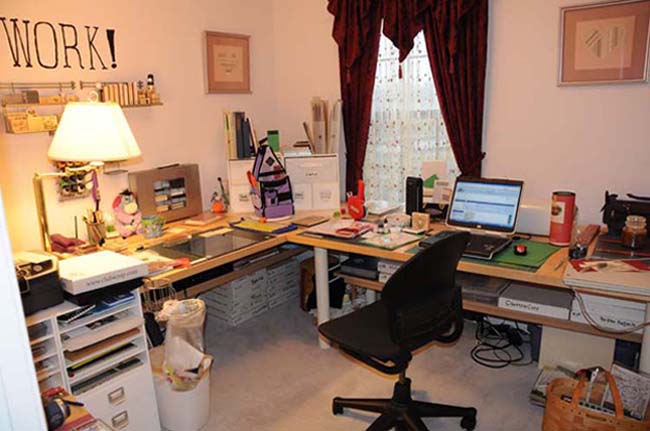As you work the basketweave stitch, you bring your needle up at the lower left and go down at the top right of each stitch. You will come up in an open hole and go down either in an open or shared hole. On the back your threads are either over two horizontal or two vertical threads. The exception is at the edges, where it looks like a single row of continental stitches.

This stitch diagram has each pass of the needle marked. To make things more clear, I will mark an identical diagram, but just number each stitch in the order you should place them.

In this diagram, each stitch is numbered. Bring your needle up at the number and go down to complete a tent stitch over a single intersection.

When you are working a row from the bottom to the top, this is the stitching order. If you look at the back of the canvas, your threads are horizontal, crossing two threads of the canvas. Most of the time a row like this is referred to an "up" row. Up rows are more fun and easier for me to work. I have to be careful to not pull my thread too tightly when working in this direction.

In this diagram, a "down" row has been indicated. The overall stitching direction is from the top to the bottom. Your thread on the back will be vertical over two threads of the canvas. Because of the angle of the needle, I find this row to be less fun to work. It isn't any harder than going in the other direction and I don't have tension problems with this row. Win some, lose some, I suppose.
Please remember that these up and down rows of stitches usually share canvas holes with other rows, leaving no empty intersections. You bring your needle up in an empty hole and go down in a hole that is either empty or shared with another stitch.
When ending threads using the basketweave, the first impulse is to run the needle under the work at a diagonal on the back. Please don't do this. It will leave a line you can see on the front. Either go along the horizontal or the vertical when burying your ends on the back. This will be much less visible on the front. When you bury your thread on the diagonal, you are using a single row of stitching and disturbing that row. When you go along the horizontal or vertical, you will be using a single stitch out of several rows each. I know that if you use the "other" diagonal, you won't be disturbing a single row of stitches, but it is easy to become confused or grow careless.
If you stop stitching at the end of a row, it is possible to do two up rows or two down rows one next to the other. This is not a good idea as you will find a diagonal line becomes visible on the front of your stitching. If you stop stitching in the middle of a row, you will find that it is easier to start up again in the correct direction. It is also easier for me to end my threads neatly.
This was plenty for me to keep sorted out as a beginning basketweave stitcher and if you have grasped this much, you will be producing some good work. For the ultimate in basketweave, you should be paying attention to whether or not the top thread of the canvas intersection is horizontal or vertical. If the top canvas thread is crossing in the vertical direction, you should be in the midst of stitching a down row. Your thread on the back will be vertical. If the top thread is crossing horizontally, you should be stitching an up row with horizontal threads on the back. Fortunately, you establish this pattern with your first stitch and every other stitch should fall correctly, without you having to check every single stitch. This is also a useful way to keep track of where you are when jumping from one area to another and when starting and stopping rows.
If you need to make a shape other than a square or triangle in basketweave, you simply don't turn and go back for the next diagonal on the same row or column of the canvas threads. On a doodle canvas, try filling in some circles. You should not be placing your first stitch at the very top, but more to the right and slightly down. Your first stitch will then not be a singleton, but will be one of a row, going up or down, depending on where you started. Remember to avoid long tails of thread on the back when you move from row to row.
If your shape has very long, skinny areas, you may find yourself trying to stitch a single row or line in basketweave. You will immediately see that you produce the continental stitch. That's correct. You cannot stitch a line of single stitches traveling horizontally or vertically using basketweave. If you are working on the diagonal for lines that are a single stitch wide, you may want to use the basketweave for the \ rows and a backstitch for the / rows. Do not turn your canvas sideways for diagonal rows of a single stitch. Try to always work in a right to left and top to bottom pattern similar to writing a page of text.
I find it is better to work both background and pattern together, rather than filling in all of the pattern first and then doing the background. Hold your canvas up to a strong light and try to look through it to check for missing stitches. Basketweave and continental each use up about the same amount of thread. The general rule is one and one half yards for each square inch of stitching.










